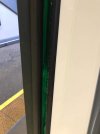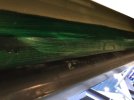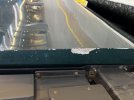LNW-GW Joint
Veteran Member
I can't see any blame attached, all parties worked well together to find the root cause.
The product complied with the specification and relevant standards, but began to fail in real life conditions.
1247 class 80x vehicles will have to be repaired, plus 487 class 385/395 vehicles, over 6 years.
That sounds like a huge cost to the railway, but it does not seem that this will all lie with Hitachi.
I can't see anything about newer builds of AT200/300 (ie EMR's 810s and Avanti's 805/7s), and what impact this situation might have on their production and introduction.
The product complied with the specification and relevant standards, but began to fail in real life conditions.
1247 class 80x vehicles will have to be repaired, plus 487 class 385/395 vehicles, over 6 years.
That sounds like a huge cost to the railway, but it does not seem that this will all lie with Hitachi.
I can't see anything about newer builds of AT200/300 (ie EMR's 810s and Avanti's 805/7s), and what impact this situation might have on their production and introduction.





